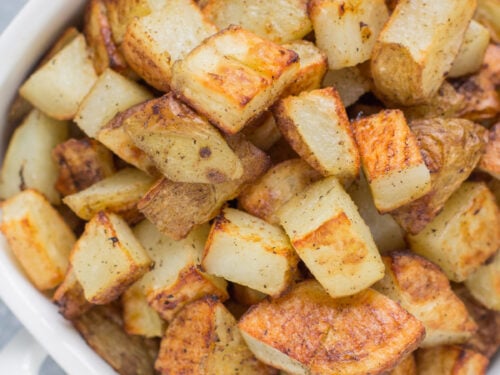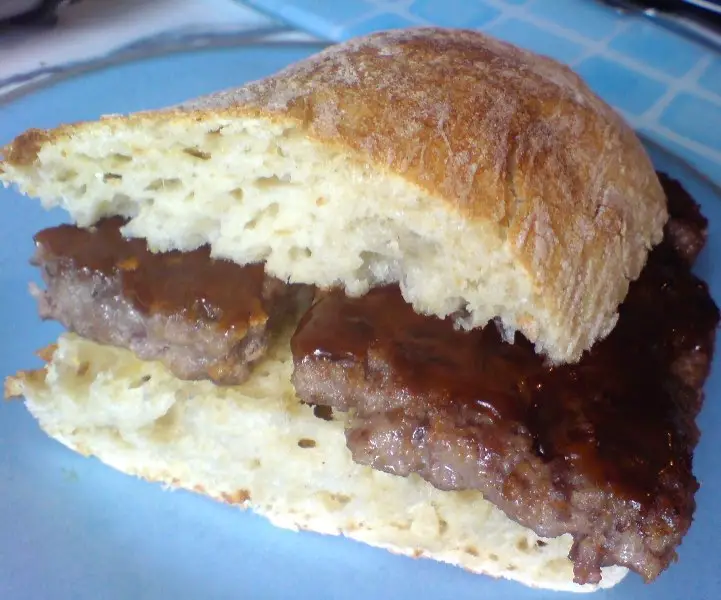Salmon is a type of fish that’s commonly consumed by people all over the world. It’s known for its high protein content and omega-3 fatty acids, which our bodies need to function properly. Despite its popularity, some people wonder if it’s possible to get sick from eating cooked salmon.
In this article, we’ll delve into the subject of cooked salmon and whether it can cause illnesses. We’ll also talk about how salmonella infections occur in salmon, identify the signs and symptoms associated with consuming contaminated salmon, and provide some steps you can take to avoid getting sick from cooked salmon.
Understanding Salmon and Food Poisoning
Food poisoning occurs when someone eats food that’s been contaminated with harmful bacteria or other pathogens. There are several types of food poisoning that one can get from eating contaminated seafood like cooked salmon. Some of these include:
Bacterial infections on food and their dangers
Bacterial infections caused by either Salmonella or Vibrio parahaemolyticus are the most common causes of seafood poisoning linked to consumption of raw or undercooked seafood.
Toxins produced by certain bacteria
Some bacteria such as Staphylococcus aureus produce toxins that leads to sickness when eaten with contaminated food.
Ingesting raw or undercooked fish while having an existing health condition may result in anaphylactic shock due to a histamine intolerance caused by non-hygienic handling or long storage times which allow microbes like Shewanella putrefaciens and Clostridium botulinum (toxin producing pathogen) to thrive.
Common Causes of Salmonella in Salmon
Salmonella is a type of bacteria found in many kinds of food items including raw meat and uncooked fruits and vegetables as well as untreated water supplies used for farming fish in commercial farms. When ingested through eating contaminated foods it bolsters the risk factor for contracting a sickness called salmonellosis which is a form of food poisoning. Salmonella in salmon may come as a result of the following factors:
Unhygienic conditions during handling, processing or packing
The handling and processing of salmon play significant roles in the presence or absence of bacteria like Salmonella and thus determining their viability for consumption. Poor food processing practices, such as sloppy cleaning techniques, lack of sanitary water supplies, contaminated surfaces or equipment used to process raw salmon can increase the presence of bacteria in finished products.
Contamination caused by infected water bodies
Commercial salmon might need to be farmed for mass production through aquaculture – farming fish in man-made tanks located near natural water sources. This opens up the potential risk factor for contamination through pollution or animal waste near or around hatcheries/fish farms.
Feeding habits and unhealthy living conditions for farmed fish
Salmon that’s fed with antibiotics may develop resistance over time leading to continual evolution and adaptation to gain immunity against medication – this means less viable medical options when fighting illnesses caused by them. Fish overcrowding can lead to poor hygiene, disease susceptibility and higher stress levels which ultimately results in weakened immune systems compared with their wild counterpart’s.
Are All Species of Salmon Safe to Eat?
When it comes down to selecting safe-to-eat species both at restaurants or home cooking, consider examining necessary health protocols like HAACP (Hazard Analysis & Critical Control Points) certification before finalizing a seal off from retailers.
Highlighting the safe consumption practices based on the kind of salmon purchased and resultant health complications:
- Cooked Pacific Salmon: Even if wild-caught Pacific salmon has ten times fewer bacteria than Atlantic types, cooking it all the way would make it more preferable since it still runs a reasonable risk.
- Farm-Raised Atlantic Salmon: Purchasing Farmed raised seafoods carry higher risks due to exposure to harmful chemicals like Bisphenol A (BPA) which contributes to an increased level of dangerous toxins present in any fish including farmed salmon.
- Raw Salmon Sushi: Check the recipe before ordering to see if it includes step where the salmon’s exposed briefly to direct heat above 145 degrees for at least five minutes in order killing off any harmful pathogens before brewing. Keep in mind it’s best consumed moderate amounts, especially if having preexisting medical conditions or allergies symptoms that worsen are being experienced until you get checked by a doctor.
Overall, the safe consumption practice has become increasingly critical as proper safety protocols must be maintained throughout the production and distribution chain of seafood products.
Possible long-term effects from consuming contaminated salmon:
Long term effects may include chronic arthritis – because this disease can develop over time if there is no treatment provided when diagnosed through blood tests showing infection, urinary tract infections, as well as sepsis – a severe bloodstream infection caused by bacteria brought around from raw or undercooked foods like salmon.
Precautionary Measures to Avoid Getting Sick From Cooked Salmon
There are some steps you should take into account while preparing, cooking, serving and storing cooked seafood dishes that could lead to particular bacterias like Salmonella or Vibrio parahaemolyticus and others. Here listed below are some precautionary measures that one must consider;
- Before purchasing your desired food item inspect their expiry dates.
- Inquire about their vendor regulations and accrediting authorities concerning hygiene standards and regulations related microbiological control.
- Use gloves when handling raw salmon then wash and rinse fresh before storage properly.
- Make sure not to cross-contaminate these seafoods with other ready-to-eat items or utensils used for those, maintain clear separation during preparation yielding finished dishes with 100% organism-free assurance without posing further public health risks.
- Always clean all surfaces/surrounding equipment that was used during preparation including pots, pans, utensils, cutting boards and knives right after use.
- Cook the salmon properly to avoid risk factors that are a part of uncooked or half-cooked consumption.
Temperature guidelines for storing cooked salmon:
Always make sure to store your cooked salmon below 40°F before eating and especially when you can’t refrigerate within the period of two hours. Keeping these temperature regulations in mind would lead to maintaining Salmon-free dishes rather than Salmonella filled food – Keep in mind It’s imperative to consider when preparing seafood dishes that aren’t served immediately after completion.
Identifying Symptoms Associated with Eating Contaminated Cooked Salmon
It’s essential to be aware of the signs and symptoms of food poisoning caused by salmonella infection due to its relation with cooked or raw foods like salmon. These include:
- Abdominal cramps
- Diarrhea/Constipation
- Nausea /Vomiting
- Headache
- Muscle Pain/weakness
It should be noted that dehydration is possible impacts from one who contracts severe vomiting or diarrhea as the primary treatment recommended involves oral rehydration therapy where fluids containing electrolytes are taken through Oral Rehydration Salts (ORS) which are used to combat fluid & nutrient losses during diarrhea.
Incorporating cases studies when researching without going into too much detail but highlighting severe implications from a bacterial infection such as dehydration or damage to vital organs.
Previously mentioned microbiological agents can result in long-term illnesses like Chronic Arthritic Syndrome that may come with joint pain, fatigue, and long recovery periods running almost months stretching years depending on underlying causes as antibiotics don’t help relieve chronic arthritis symptoms unless diagnosed relatively quickly after signs show-up early stages such as fever and rash occurrence rates thus differ between individuals based on how healthily they’ve consumed infected fish.
Treatment Options For Cooked Salmon Infections
If you experience any symptoms associated with eating contaminated salmon after seeking medical advice, you may be diagnosed with salmonellosis or any other kinds of seafood poisoning.
Specific treatments available, including prescription medication options for affected individuals dealing with multiple side effects as a result of an infection:
- Fluid and Electrolyte Replacement Therapy – this will cater to the fluid loss and nutrient balance in your body due to diarrhea,
- Antibiotics that neutralize Salmonella bacteria; typically consist of guacamole-based (cephalosporin) or fluoroquinolone antibiotics – they have different strains thus would depend on the individual’s diagnosis.
- Antidiarrheal Medications may be prescribed as needed by reducing the bowel frequency but should only be used under strict doctor supervision because they can complicate illness patterns in certain cases
Conclusion
We’ve looked at whether getting sick from cooked salmon is possible, identifying key steps to follow to reduce risks involved when handling cooked fish anytime you want to consume it with least risks possible.
It’s essential to ensure proper safety and hygiene control measures while buying, handling, and preparing seafood items such as salmon. So, make sure that you pay attention where ingredients come from before purchasing them. The next time you cook salmon or order for one check its source, content provider and proper temperature regulation when storing leftovers after preparation avoiding food illnesses like Salmonella infections.
Finally, It’s best always compiled with professional guidance seek still medical help whenever dehydration leads up experiencing severe nausea or vomiting episodes even after following recommended dosage guidelines closely which would prevent further severe health conditions from developing alongside quick sequestration recuperation.
Q&A
- Q: Can cooked salmon lead to food poisoning? A: Yes, it is possible to get sick from cooked salmon. If the fish was not stored properly or if it was not cooked to the correct temperature, it can contain harmful bacteria that can cause food poisoning.
- Q: What are some symptoms of salmonella from cooked salmon? A: Symptoms of salmonella from cooked salmon can include diarrhea, abdominal pain, fever and vomiting.
- Q: How can you avoid getting sick from cooked salmon? A: To avoid getting sick from cooked salmon, ensure that the fish is properly stored and cooked. Store the fish in a cold environment until it is ready to be prepared and make sure it reaches an internal temperature of at least 145°F before consuming.
- Q: Are there any benefits to eating cooked salmon? A: Absolutely! Cooked salmon is packed with omega-3 fatty acids which are great for brain health and reducing inflammation in the body. Additionally, it is an excellent source of protein that helps build strong muscles and support overall wellness.






